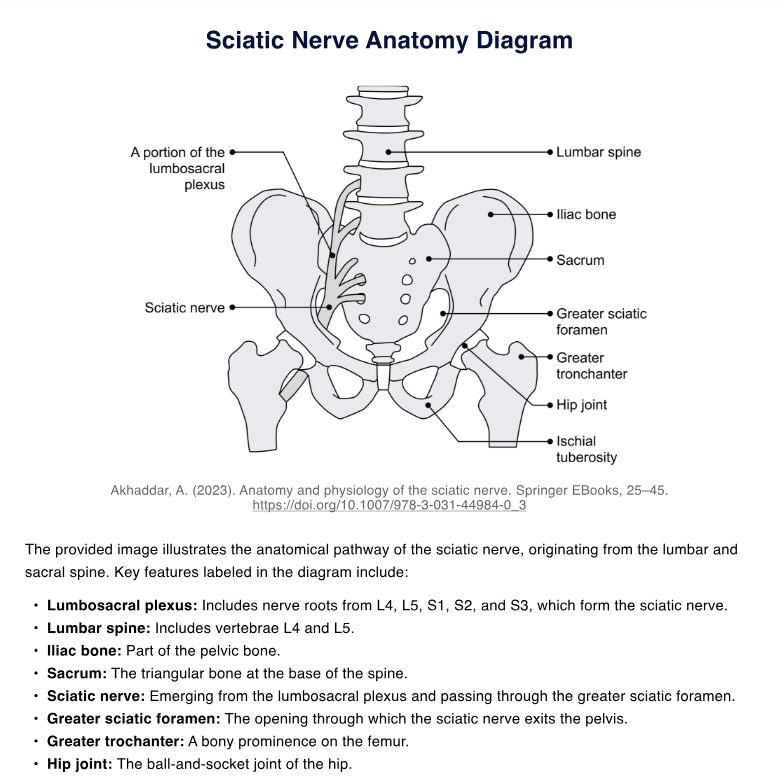It helps healthcare professionals accurately identify key anatomical landmarks, trace the leg and foot sciatic nerve pathway.

Sciatic Nerve Anatomy Diagram
Download our free Sciatic Nerve Anatomy Diagram PDF to understand the sciatic nerve's pathway, key landmarks, and relationships with surrounding structures.
Use Template
Sciatic Nerve Anatomy Diagram Template
Commonly asked questions
Key landmarks include the lumbar spine (L4, L5), sacrum (S1, S2, S3), iliac bone, greater sciatic foramen, hip joint, and ischial tuberosity.
By showing potential compression sites, such as beneath the piriformis muscle, the diagram helps in identifying areas where the sciatic nerve may become entrapped.
EHR and practice management software
Get started for free
*No credit card required
Free
$0/usd
Unlimited clients
Telehealth
1GB of storage
Client portal text
Automated billing and online payments











